| SEDIMENTARY ORIGIN: OBSERVED AND INFERRED
|
The claim of sedimentary origin is usually easy to substantiate. The presence in a rock layer of primary structures, such as fossils, ripple marks, or mudcracks and the absence of features indicative of igneous origin, such as vesicular glass or of metamorphism, such as slaty cleavage, serve as strong evidence.  
Investigation commonly focuses on determining the specific environments in which sediment was formed, transported, deposited and lithified. Here is one example in which field relationships play an important role in developing a hypothesis as to the origin of a particular sedimentary rock. | |
| OBSERVATIONS |
 | The diagram on the left is a three-dimensional block diagram showing a cliff rising above a fairly flat plain. The cliff is made of sedimentary rock: a cemented mass of unsorted boulders, pebbles, sand and clay that displays no layering (Rock 2). The sedimentary rock rests on metamorphic rock (Rock 1). In general, the plain is covered by vegetation and underlain by a soil layer that thickens away from the cliff. Near the foot of the cliff, the soil is absent and the underlying rock is exposed. On the surface of exposed ROCK 2, there are are series of parallel grooves cut into the rock (shown as black lines). |
| The problem the field geologist wants to solve is "How did Rock 2 form?" |
| HYPOTHESES |
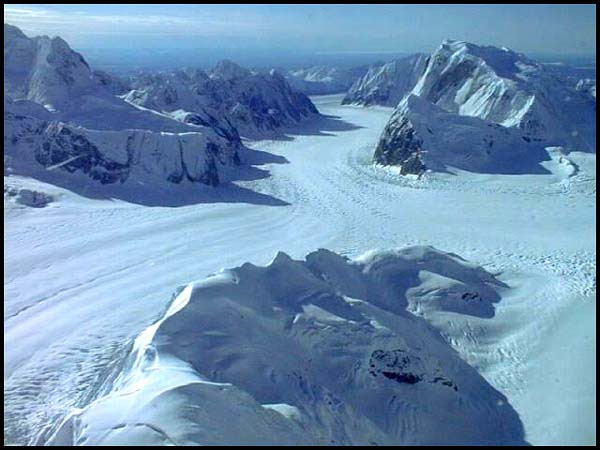
Photo: National Park Service
The features present suggest the depositional and erosional activities of glaciers in times gone by.  Consider the evidence piece by piece. Consider the evidence piece by piece.
|
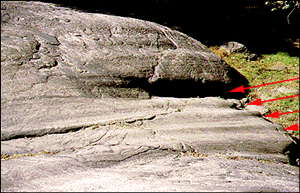 | 1. The grooves cut into the surface of Rock 2 resemble those that are the result of recent glacial erosion (indicated by red arrows). |
 | The unlayered, unsorted sediment out of which Rock 2 is made resembles recent, unlithified glacial deposits. |
| Here's the story the geologist proposes: |
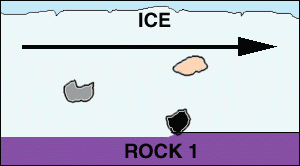 | Glaciers passed over a region where Rock 1 was exposed. During their passage, rock fragments embedded in the ice carved grooves in Rock 1. |
 | Upon their retreat, the melting glaciers deposited rock debris onto Rock 1, burying it. |
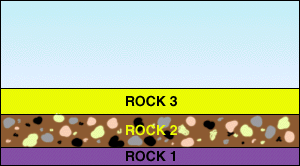 | Time passed and the glacial debris was itself buried by sediment. Groundwater passing through the debris and the overlying material deposited a cement and turned them into Rocks 2 and 3. |
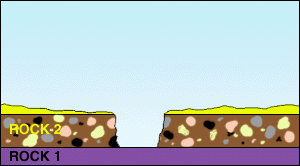 | With the passage of more time, erosion cut into Rocks 2 and 3, forming a cliff and a valley on whose floor the grooved surface of Rock 1 is revealed. |
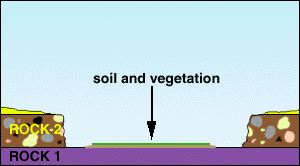 | With continued erosion, the cliff is eaten back, the valley widens, and more of Rock 1 is exposed. With time, the exposed part of Rock 1 is weathered and turns into soil. Closer to the cliffs, where Rock 1 and has not been exposed as long, soil has not yet developed and the grooves on the surface of Rock 1 remain exposed. |
 | The original observations are now provided with an explanation. |
|
|
|
|